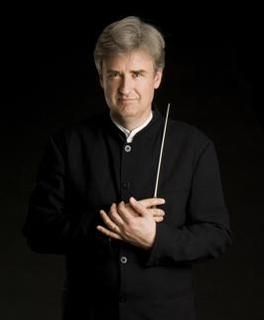|
Back
Mini-series off to a fine start Toronto
Roy Thomson Hall
11/12/2014 - & November 13, 2014
Wolfgang Amadeus Mozart: Le nozze di Figaro, K. 492: Overture
Ludwig van Beethoven: Piano Concerto No. 4 in G Major, Op. 58
Carl Nielsen: Symphony No. 4, Op. 29 "The Inextinguishable"
Jan Lisiecki (piano)
The Toronto Symphony Orchestra, Thomas Dausgaard (conductor)

T. Dausgaard (© Ulla-Carin Eckblom)
It’s nice to report that Thomas Dausgaard has returned to Toronto to conduct a unified series of concerts. In 2010, he led a complete Sibelius cycle. Last season he presented Carl Nielsen’s Symphony No. 3. This visit features three concerts, each with a Nielsen symphony paired with a Beethoven piano concerto played by Jan Lisiecki.
Nielsen revered Mozart, and the series also features a pair of Mozart overtures. This first concert in the series opened with the overture to Le nozze di Figaro which served to put an interesting perspective of the following work, Beethoven’s Piano Concerto No. 4. The orchestra was reduced to 50-some players, which is pretty hefty for Mozart, but not too much so in a 2600-seat hall. It went well, but the same-size forces were even better for the Beethoven Piano Concerto No. 4. It is easy to think of Mozart as the epitome of restrained classical elegance while Beethoven is a huge atomic blast that blew all that away. Not so, as shown by these linked performances.
Lisiecki started off in very understated fashion and maintained a fine, clear texture throughout. His approach worked especially well in the piano-orchestra “argument” in the second movement in which the quiet piano "tames" the truculent orchestra. Then when more overtly Beethovenian statements arrive in the final movement he and the orchestra carried it all of with elegant dash.
The attentive, near-capacity audience responded very warmly and were treated to a subtle, finely-sculpted encore, Chopin’s Prelude Op. 28, No. 15 (the “Raindrop”).
For Nielsen’s “Inextinguishable” symphony there were over 80 musicians. Dausgaard launched a fierce attack with the single-movement work’s stormy opening. What follows is episodic, often abruptly so. The composer probes a line of musical thought then interrupts himself with something entirely different. At one point there is a grand passage reminiscent of Richard Strauss’ Alpensinfonie which, coincidentally, was being composed at the same time. “Harmonically unstable” is the key description in Kevin Bazzana’s ever-astute program notes. Towards the end of the 35-minute piece the racing strings, accompanied by dueling sets of tympani, seem to be working toward a transcendental ending only to fall back, but then to regroup, this time with brass. It all leads to a rousing finish. There is much highlighting of the orchestra’s splendid woodwinds.
The work was composed during a doubly-stressful period in Nielsen’s life: his marriage was in trouble and World War I was raging. “Why go on?” seems to be the question asked - and only after much fraught rumination does a conflicted affirmation arrive. It’s somewhat like a Mahler symphony, but miniaturized.
Michael Johnson
|